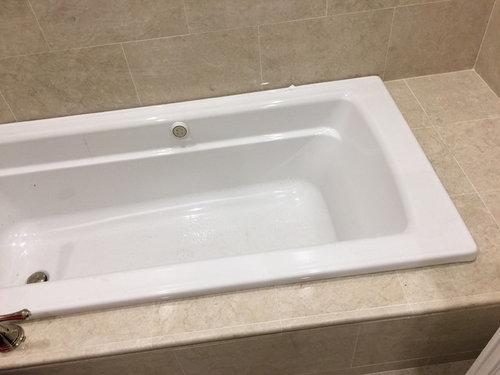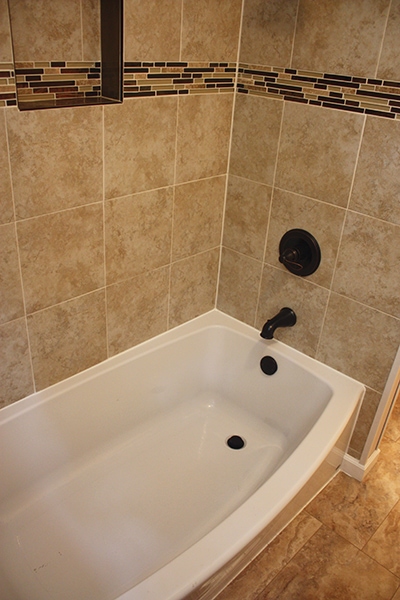Listed here in the next paragraph you might get a lot of outstanding news on the subject of Installing A Bathtub.

Mounting a bath tub isn't specifically rocket science, however it does need strong plumbing, woodworking, as well as in some cases, tiling skills. Changing an old bath tub with a new one is also a moderately tough job. If the old tub is conveniently available, the task can relocate rapidly; if you need to open a wall to eliminate the old bathtub as well as position the brand-new bathtub, the task is much harder. In either instance, the project is within a home handyman's skills, although you will certainly require a helper to vacate the old bathtub and also set in the new one. Ensure you have qualified on your own for the task and also fit attempting it. As opposed to hiring a specialist to take control of a halfway-completed project, it is far better to consider employing one before you begin. Opportunities are you might need an expert plumber to make tube connections.
This short article will assist you mount a new bathtub in your shower room if you have currently acquired a new bathtub and don't need to alter the plan of your previous supply of water pipelines.
Your tools and also material checklist must comprise the following:
Removing Old Taps
If you need to change old taps with brand-new ones as a part of your installation, after that the first thing you should do is disconnect the water supply. After doing so, turn on the taps to drain pipes any type of water continuing to be in the system. The process of eliminating the existing taps can be rather problematic because of the limited gain access to that is frequently the situation.
Utilize a basin wrench (crowsfoot spanner) or a faucet tool to reverse the nut that connects the supply pipes to the taps. Have a cloth ready for the staying water that will originate from the pipelines. When the supply pipes have actually been gotten rid of, use the exact same tool to loosen the nut that holds the faucets onto the bath/basin. You will certainly require to quit the solitary faucets from transforming throughout this process. Once the faucets have been gotten rid of, the holes in the bath/basin will need to be cleaned of any kind of old securing compound.
Prior to going on to fit the new faucets, contrast the pipe connections on the old taps to the new taps. If the old taps are longer than the new faucets, after that a shank adapter is required for the new faucets to fit.
Suitable New Touches
If the tails of the new faucets are plastic, after that you will certainly require a plastic adapter to prevent damage to the thread. One end of the connector fits on the plastic tail of the tap and the other end offers a connection to the existing supply pipes.
If you require to fit a monobloc, then you will need decreasing couplers, which attaches the 10mm pipeline of the monobloc to the conventional 15mm supply pipe.
Next, position the tap in the installing opening in the bath/basin making sure that the washing machines are in area between the faucet and the sink. Protect the tap in place with the maker provided backnut. When the tap is securely in position, the supply pipelines can be attached to the tails of the taps. The faucets can either be attached by utilizing corrugated copper piping or with regular tap ports. The previous kind should be linked to the tap finishes first, tightening up only by hand. The supply pipelines can later on be connected to the various other end. Tighten up both ends with a spanner after both ends have been attached.
Mounting the Bath tub
Utilizing the two wood boards under its feet, place the bathtub in the required placement. The wooden boards are practical in evenly spreading the weight of the bathtub over the location of the boards as opposed to concentrating all the weight onto four small factors.
The following objective is to ensure that the bathtub is leveled all round. This can be attained by checking the level and adjusting the feet on the bathtub till the spirit level reads degree.
To install faucets, fit the bottom of the outermost flexible faucet connector to the appropriate supply pipe by making a compression join; after that do the very same for the various other tap.
Activate the water system and check all joints as well as new pipework for leaks as well as tighten them if essential. Load the tub as well as additionally check the overflow outlet and also the normal outlet for leakages.
Finally, repair the bathroom paneling as described in the maker's instruction manual. Tiling as well as securing around the tub should wait till the bathtub has been used a minimum of when as this will certainly settle it right into its final placement.
Getting ready for the Installation
To start with, the supporting framework provided with the bathroom needs to be fitted (if needed) according to the maker's directions. Next off, fit the taps or mixer to the bath tub. When suitable the faucet block, it is very important to see to it that if the faucet features a plastic washer, it is fitted in between the bath as well as the faucets. On a plastic bath, it is additionally sensible to fit a sustaining plate under the taps system to stop strain on the bathtub.
Fit the adaptable faucet adapters to the bottom of both faucets utilizing 2 nuts and also olives (occasionally supplied with the bathtub). Fit the plug-hole electrical outlet by smearing mastic filler round the sink electrical outlet hole, and afterwards pass the electrical outlet via the hole in the bath. Make use of the nut provided by the supplier to fit the plug-hole. Take a look at the plug-hole electrical outlet for an inlet on the side for the overflow pipeline.
Next, fit completion of the flexible overflow pipe to the overflow outlet. After that, screw the pipe to the overflow face which ought to be fitted inside the bathroom. Make certain you use every one of the provided washing machines.
Connect the catch to the bottom of the waste outlet on the bathtub by winding the string of the waste outlet with silicone mastic or PTFE tape, as well as screw on the catch to the outlet. Connect the bottom of the overflow tube in a similar manner.The bath ought to now prepare to be suited its final placement.
Tiling Around the Tub
In the area where the bathroom meets the ceramic tile, it is required to secure the accompanies a silicone rubber caulking. This is very important as the installation can relocate sufficient to fracture a stiff seal, triggering the water to permeate the wall between the bath as well as the tiling, bring about problems with dampness and also possible leaks to the ceiling listed below.
You can choose from a selection of coloured sealers to blend in your fixtures and fittings. They are offered in tubes as well as cartridges, as well as can securing gaps approximately a size of 3mm (1/8 inch). If you have a larger space to fill up, you can load it with twists of soaked paper or soft rope. Keep in mind to always load the bath tub with water before sealing, to permit the activity experienced when the tub remains in use. The sealer can crack relatively very early if you do not think about this movement prior to securing.
Conversely, ceramic coving or quadrant tiles can be utilized to border the bathroom or shower tray. Plastic strips of coving, which are easy to use and also reduce to dimension, are also easily available on the marketplace. It is recommended to fit the floor tiles utilizing waterproof or waterproof sticky as well as cement.
A Step-by-Step Guide to Installing a Bathtub
Is your bathtub looking a bit dated lately? Believe it or not, installing a new one is a project you can do yourself. Whether your bathtub is broken or doesn’t fit in with your current bathroom’s design, you can fix it without having to hire a contractor or paying labour costs.
But, beyond saving money, there are other benefits of installing your own bathtub. When you do this project yourself, you can customise every step of the process. You can also make sure the finished product looks exactly the way you want it to.
This DIY project is quite involved, but by doing some research, preparing your bathroom and using the right equipment, it is definitely one you can take on. This guide will help you understand the technical procedures behind installing a new bathtub.
Remove the Existing Bathtub
To remove the old bathtub, you will need to turn the water supply off before you start any work. After you turn the water off, there will likely still be some water left in your plumbing system, which you can remove by turning on a faucet below the level of the bathtub. Once the water stops running, you are ready to start working.
The easiest way to remove the tub is to remove the faucet, handles and other piping and then pull the tub out from the wall. If this doesn’t work in your situation, you will need to remove part of the wall, remove the piping and then slide the tub out.
Choose the Right Bathtub
The ideal way to replace your bathtub is to find one that has the exact dimensions and has the drain and faucet on the same side as your old one. This way, it will fit in the same place and you won’t have to change the piping system in your bathroom. Choose a tub that matches your home’s decor and fits with the style of the bathroom.
Install the Plumbing and Ledger Board
You can purchase a tub drain kit at a hardware store which will have all the pieces you will need for your new tub’s plumbing. Follow the instructions that came with the kit to install the plumbing in the new tub and then take measurements to make sure the plumbing in the tub will align with the plumbing in your bathroom. If it doesn’t, now is the time to make necessary adjustments.
Some bathtubs need a ledger board that is installed on the wall behind the tub to help support it. If your new bathtub requires one, the directions that came with it will tell you how high it should be installed. If your old bathtub had a ledger board, and it is still in good condition, you can adjust its height to match the new bathtub.
Install the Bathtub
When the plumbing and ledger board are ready, you can install the new bathtub. Carefully lower it into the space, being careful not to damage the tub, wall, plumbing or ledger board. Since bathtubs are very heavy and you will need to line the tub up exactly, it is wise to have someone help you with this step.
Once the tub is in place, it needs to be perfectly level, so use a bubble level instead of estimating how level the tub is. Put the level on the top edge of the tub, not the bottom on the inside, since many tubs are designed with a sloped bottom.
If the bathtub isn’t level, adjust the ledger board and shift the tub until it is. When it is level, use screws to attach the tub to the wall studs. Most bathtubs have pre-drilled holes in the upper flange, so use these but do not over tighten the screws.
Hook up the Plumbing
Now that the bathtub is installed, it needs to be attached to your plumbing system. First, install the shoe fitting under the tub and drain pipe, then the overflow pipe and then the drain flange. Your tub plumbing kit will include specific instructions on how to install these pieces.
Install the Bathtub Surround
A bathtub surround will protect the walls around the tub from water damage and can give your new bathtub a more finished look. To install one, make sure the wall is completely clean and dry so that the adhesive will be able to hold the surround securely. Then, measure the surround and mark the same dimensions on the wall above the tub.
Following the directions that came with the surround adhesive, apply it to the wall. Press the surround against the wall on top of the adhesive and then pull it away for about three minutes to activate the adhesive, then apply the surround again. Keep in mind that this is the most common way to use an adhesive, but you should check the instructions on the package for any special steps.
If there is any excessive adhesive around the sides of the surround, you can use mineral spirits to remove it. Then use masking tape to hold the surround panels in place until the adhesive is dry. Using silicone, seal all the cracks between the surround panels and the gap between the bottom of the panels and the top of the bathtub.
If you want to install tile above your bathtub, instead of a bathtub surround, the process will be very similar. But, you will need to measure and cut tiles and install each one individually, using tile spacers to make sure they are evenly spaced. You will then use grout to fill in the spaces between the tiles.
https://www.hss.com/blog/bathroom/a-step-by-step-guide-to-installing-a-bathtub/

Do you appreciate reading up on Tools You Need to Install a New Bathtub ? Write feedback further down. We'd be glad to find out your feelings about this review. Hoping that you come back again before long. Don't hesitate to take a moment to distribute this article if you enjoyed reading it. Bless you for your time. Visit us again soon.
Dial, stress less!
 Alicia Silverstone Then & Now!
Alicia Silverstone Then & Now! Michael Bower Then & Now!
Michael Bower Then & Now! Freddie Prinze Jr. Then & Now!
Freddie Prinze Jr. Then & Now! Barbi Benton Then & Now!
Barbi Benton Then & Now! Katey Sagal Then & Now!
Katey Sagal Then & Now!